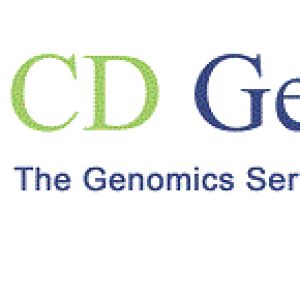High-Throughput Sequencing Approach to Explore the Human MicrobiomePosted by kiko on March 22nd, 2022 The Use of Microbiome Sequencing in Cancer Research A growing body of evidence now suggests that human microbial dysbiosis has a crucial role in cancer development and progression. Unlike earlier studies relying on culturing bacteria from the tissue of cancer, high-throughput sequencing methods have enabled genotyping the microbial ecosystem within cancer tissue from hundreds to thousands of patients in parallel, providing a better overview of the landscape of cancer diseases associated with the human microbiome. By utilizing 16s rRNA amplicon sequencing, we found enrichment of microbe species in cells or tissues from patients with cancer. However, lots of different bits and pieces from many different species may be lost when sequencing a complex community like the human gut microbiome. Whole transcriptome sequencing allows for the acquisition of large scale datasets, allowing for the detection of specific microbes that outcompete the tumor cells in the tumor micro-environment, enabling the recruitment of immune cells and thereby mitigating tumor growth. Metagenomic and metatranscriptomic sequencing approaches provide a very deep and complete picture of the microbial community, advancing the identification of a set of abundant species comprising the core microbiome of cancer organs. Mapping human microbial species to their functional profiles and delineating specific mechanisms would be focused in the future on which microbes enable cancer development or affect therapeutic response. In addition, metagenomic and metatranscriptomic investigations, combined with metabolomics, could provide more comprehensive insights into human-microbe interactions within the study of cancer. Microbiome Sequencing in Oral Disease Research As the second most complex organ in the human body, the oral microbial ecology has essential functions in maintaining oral health, including cavities, osteitis, periodontal diseases, and tonsillitis. Although the oral microbiome comprises a core and a variable microbiome, it is extraordinarily complex, leading to functional variations among samples. This is because each different surface of the oral cavity has a unique ecological niche with its own nutrients and conditions. The advent of amplicon sequencing has greatly facilitated the revelation of complex bacterial components, addressing the limitations of culture isolation. This method could not provide sufficient information at the sub-species level. Thus, high-resolution microbiome analysis needs to be performed at a much greater sampling depth to determine strain-level population structures and dynamics relevant to ecology and epidemiology and for public health interventions. Whole genome sequencing (WGS) has been introduced sporadically in oral microbiome research because the low number of samples from the oral cavity does not lend itself to large-scale analysis. This could be mitigated in part by using efficient microbiome collection methodology, if at all. Besides, single-cell genome sequencing of microbial cells has become possible in recent years and offers a solution for determining the metabolic features and pathogenic potential of specific bacterial cells, which also requires highly effective isolation methods, especially from solid tissues. CD Genomics has been working on it for many years. It accelerates the entire microbiome industry toward breakthrough discoveries. We have developed microbial genomics services, oral/stool sample collection products, and downstream bioinformatics services, enabling breakthrough discovery in academic and clinical research. Like it? Share it!More by this author |


